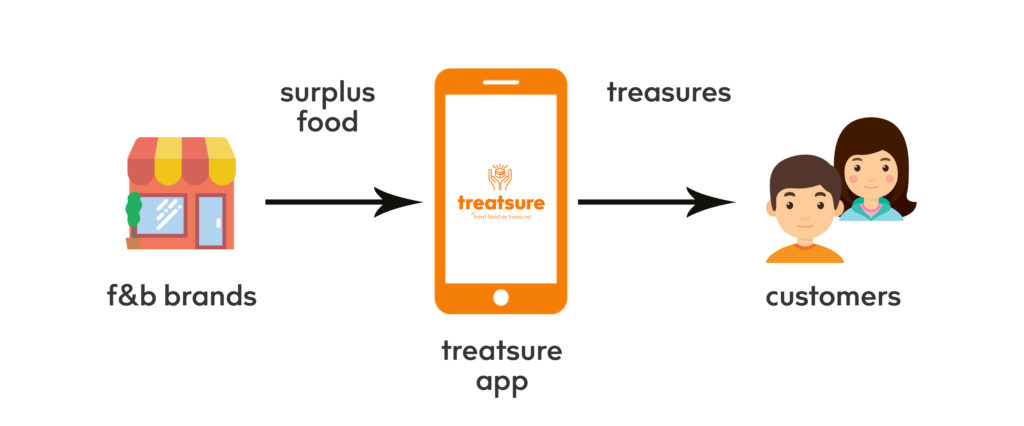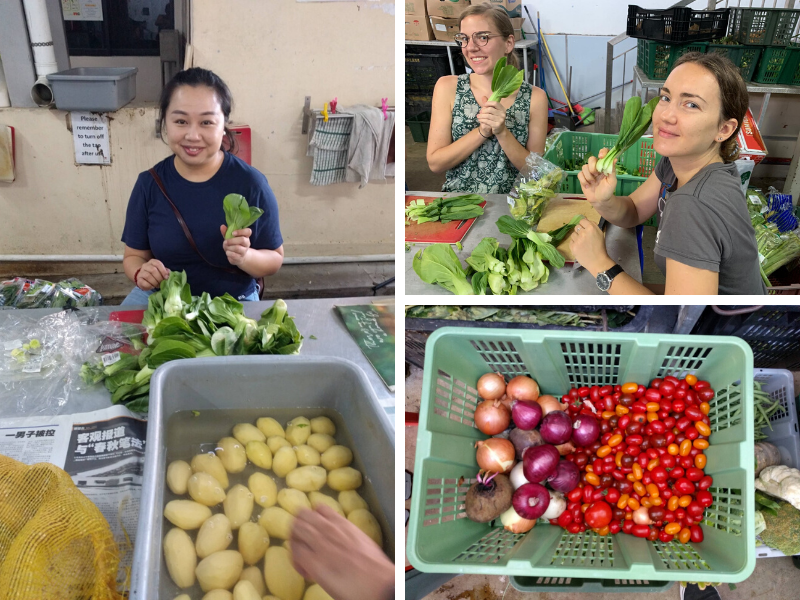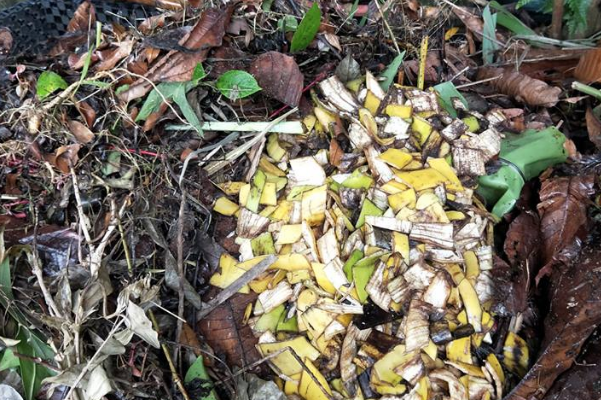Published 27 July 2023 ● Last Updated on 7 December 2023
By now many of us know that Singapore imports about 90% of its food supply from over 170 countries. But did you know that 1/5th of food – whether imported or locally produced – is lost or wasted annually in Singapore as per a study by Singapore Environment Council? Discarded food (cooked or raw) is actually the second-heaviest item in the national bin (Waste and Recycling Statistics).
First things first – Food loss and wastage are not the same. ‘Food loss’ refers to food being discarded along the supply chain — growing, processing, packaging, transporting, and marketing — and not reaching the consumer. Food spillages, and reduction in quality due to bruising or wilting are some examples of food loss. As for ‘Food waste’, it refers to food that is of good quality and fit for consumption but does not get consumed because it is discarded―either before or after it is left to spoil. In Singapore, leakages in the food system happen primarily at two levels:
At home – Poor storage leading to spoilage, expired food, edible but ugly food not being purchased, and cooked food wasted on the plate.
Outside the home – Excess cooked food in restaurants, hawker centers, and, ugly foods not making it to the supermarket aisles.
Is it even possible to prevent food loss and wastage?
Yes, it is! In Singapore, there are a growing number of businesses using tech solutions, charities, environmental advocates, and communities that are embracing steps to consciously mitigate food loss and waste. These initiatives are organized around a redistribution of excesses and the not-so-perfect – both way better solutions than the cheaper option of trashing. We have put together some of the solutions we are familiar with.
1. Business ventures
- Local social enterprise, UglyFood, picks the fruits and veggies that do not make it to the supermarket aisles due to cosmetic filtering and converts them into ‘Beautiful’ cold pressed juice or ‘Uplift’ sorbet popsicles. The best part- they take bulk orders and have interesting ‘bundle options’ on their platform, so connect with them for your next big event at home or work. You can indulge in yummies and have a narrative to tell at the same time! Update: Unfortunately, UglyFood ceased its operations in January 2023. The company contributed to saving over 200 tonnes of food through its 7-year history.
- A true #techforgood solution, food delivery app, Treatsure, tackles the food waste problem by selling excess fruits and vegetables as well as excess food from hotel and restaurant buffets- at value deals. Treatsure lists the suppliers on its platform and makes their surplus items available on its app. Buy fresh surplus greens from homegrown Vertical Farm, Sustenir or Hydroponics based brand Just produce, groceries from Unpackt, Tezz Grocery, and AtasCo among others. This company continues to demonstrate strong contributions to combating food waste as over 30 tonnes of food waste have been saved since 2017.

- Social enterprise, Treedots partners with importers to redirect the flow of unsold inventory of food – either excess, ugly, or, close to expiry- to businesses and consumers at clearance prices. This way food ends up on plates rather than in the bin! Currently, the B2B platform is accessible via the app Treedots. Follow them on Facebook and Instagram to keep posted on the latest from the group.
- Major supermarkets in Singapore like NTUC FairPrice, Giant, Cold Storage, and Sheng Siong are beginning to focus on strategies that tackle food loss and waste by managing inventory and purchases effectively, so as to avoid over-ordering. They are also increasingly adopting reduced-to-clear promotions for vegetables, fruits, and close-to-expiry products. Use these deals to save on prices and save food!
2. Charities
- Food Bank – A member of the Global FoodBanking network, The Food Bank Singapore is a registered charity that collects donations of dry and unexpired food at various drop-off points islandwide and distributes it to over 200 beneficiaries in their network. [Drop off locations listed here]. In addition to dry food collection and redistribution, The Food Bank offers opportunities to volunteer. Head over to their Facebook page for the latest updates.
Want to volunteer time to help with the sorting, delivery, or excess food at The Food Bank? Or even better, want to have your next birthday party doing something meaningful? Click here.
- Food From the Heart (FFTH) – This is a Singapore based-charity set up with a mission to ensure the needy are fed via equitable distribution of food. Some of the programmes that address the redistribution of excess food are:
Bread Run – Volunteers from FFTH collect and distribute nearly 28,000 kg of leftover bread monthly from over 100 F&B outlets islandwide, saving nearly 336 tons of bread from reaching the incineration plants.
Marketplace – The logistics team from FFTH collects packaging-damaged and near-expiry items from all NTUC FairPrice supermarkets. Most of the items are in usable condition and range from unexpired food products to household items like laundry detergents. The items are sorted by volunteers of FFTH before being donated to welfare homes and those under the Community Food Pack programme. Want to donate food? Just refer to this wish list and make your gift count!
Want to volunteer with FFTH? Click here to see the various roles you can play.
- Willing Hearts – A local charity that operates a soup kitchen – this kitchen works all year round to prepare, cook and distribute about 5,000 daily meals to over 40 locations island-wide. How do they help manage food excesses? They are open to accepting unexpired food items as well as usable fresh/frozen vegetables, and the items on this list. So if you see rampant wastage in your neighborhood wet market or your community, please connect them to Willing Hearts.
Want to volunteer with Willing Hearts? Click here.

How about saving food waste from heading for the incineration plant?
Some degree of wastage of food is unavoidable, despite best intentions! There are a few commendable initiatives ongoing in Singapore to reduce the burden on the Semakau Landfill.
1. Composting in the community
One example is the Pavilion’s edible and biodiversity garden located in Bukit Gombak, Singapore. This is a community garden, where residents from the neighboring area and friends from around the island contribute food scraps to the compost pile. Composting has the dual benefit of managing the food waste problem as well as improving soil productivity. The volunteers conduct sessions on how to grow edibles and how to compost at the gardens too. Please message them on their FB page to enquire if you want to visit. Foodscape Collective, a network of individuals who are working towards making a circular economy for food, has created a crowdsourced map of food scrap donors and compost makers in Singapore. Click here to find the location nearest to you.

2. Businesses are doing a fair bit too
Eco-Wiz Group Pte Ltd provides an on-site food waste treatment system that recycles food waste on-site and decomposes it into greywater within 24 hrs. This water can be further filtered or reused for non-potable uses. The ecoDigester system has been adopted in several developments across Singapore, like mixed development malls, schools, hotels, supermarket chains, hawker centres, etc. (Source: SFA)
Siloso Beach Resort in Sentosa composts its food waste – barring meats, oil, or anything acidic – using earthworms.
Two businesses offering tech solutions to combat food waste – both present in Singapore – are Winnow Solutions and homegrown Insight by Lumitics. Using AI image recognition and data analytics, their solutions help players in the F&B industry track and manage food waste, with an eventual objective to reduce waste and control costs. Sofitel Singapore has installed Winnow’s smart food waste tracking system and successfully reduced food waste by 2-4%.
3. Government action
Given that the food needs of Singapore are largely met by imports (90% of food was imported from nearly 180 countries in 2021) the Singapore Food Agency(SFA) was formed in April 2019 to focus on just that, food-related issues. Simultaneously, the government has announced a 30 by 30 target, to be self-sufficient for up to 30% of the country’s nutritional needs domestically by 2030. To achieve this, the nation is exploring and implementing high-productivity methods and innovative farming solutions. However, the need to tackle the food waste issue cannot be undermined. Wondering how food-secure Singapore is? Read this article detailing just that!
A landmark Resource Sustainability Act (RSA) was enacted in October 2019 -within this act, the requirements relating to food waste are that from 2024,
- In the design stage itself, developers of new large commercial and industrial premises have to allocate and set aside space for on-site food waste treatment systems.
- Existing large commercial and industrial food waste generators will have to segregate their food waste for treatment.
In the Integrated Waste Management facility, expected to be functional by 2024, food waste from restaurants, hawker centers, supermarkets, etc. are segregated at source and then co-digested with used water sludge at the Tuas Waste Reclamation Plant [WRP] to produce biopulp.
Wondering what you can do to address this mammoth problem?
Here are a few handy tips to help you start. What are you waiting for?
1. Make a shopping list
Buy what you need. Do not give in to the buy 1, get 2 free carrot, if you are not sure of using it. Still, bought it, but don’t like what you bought? Try and pass it on to a friend after checking.
2. Choose sustainable foods
Many types of common seafood, such as barramundi cod, silver pomfret, and bluefin tuna, are currently overexploited and at risk of population collapse (See WWF’s sustainable seafood guide for Singapore ). Choose to buy seafood only from properly managed fisheries, so that an abundance of food sources are conserved. Similarly, one should select meats, vegetables, and fruits with sustainable certifications like the SG GAP certification.
3. Buy ‘uglies’, save money in the process
A pretty fruit or vegetable is as tasty as the not-so-pretty one, so go over to the reduced-price aisle next time you are in a supermarket, and don’t judge the fruit/veg by its cover!
4. Support Local
When you purchase from local growers, you incentivize production in Singapore. This not only supports the 30 by 30 goal, but it also reduces the carbon footprint of your food by lowering its food miles.
5. Out for a meal with friends?
Order just enough, in fact, lesser than usual. Since you can’t control what the rest of the gang orders, remember to bring a box for tapao!
6. Recycle properly
Do not contaminate the recyclables – remove food bits before sending the plastic for recycling. Better still – do not take plastic!
7. Compost at home
Whether on the balcony or in your backyard, creating your own compost is the best way to monitor what you grow. Refer to this step-by-step guide by NParks that you can follow to create your very own organic compost in 3-6 months. Before you start wondering, yes maggots do appear, but if moisture is controlled, they are few in number and honestly, they are needed! Wondering how to put a bin together? Here is a list compiled by one of our very own local eco-heroes, Olivia Choong, also known as ‘The Tender Gardener’. Have a look!
8. Volunteer and be a part of the solution
Updated July 2023. The original article was published on this site on September 23, 2018.
Related Articles
Sustainable Singapore | Your role in making our Little Red Dot food secure



0 Comments